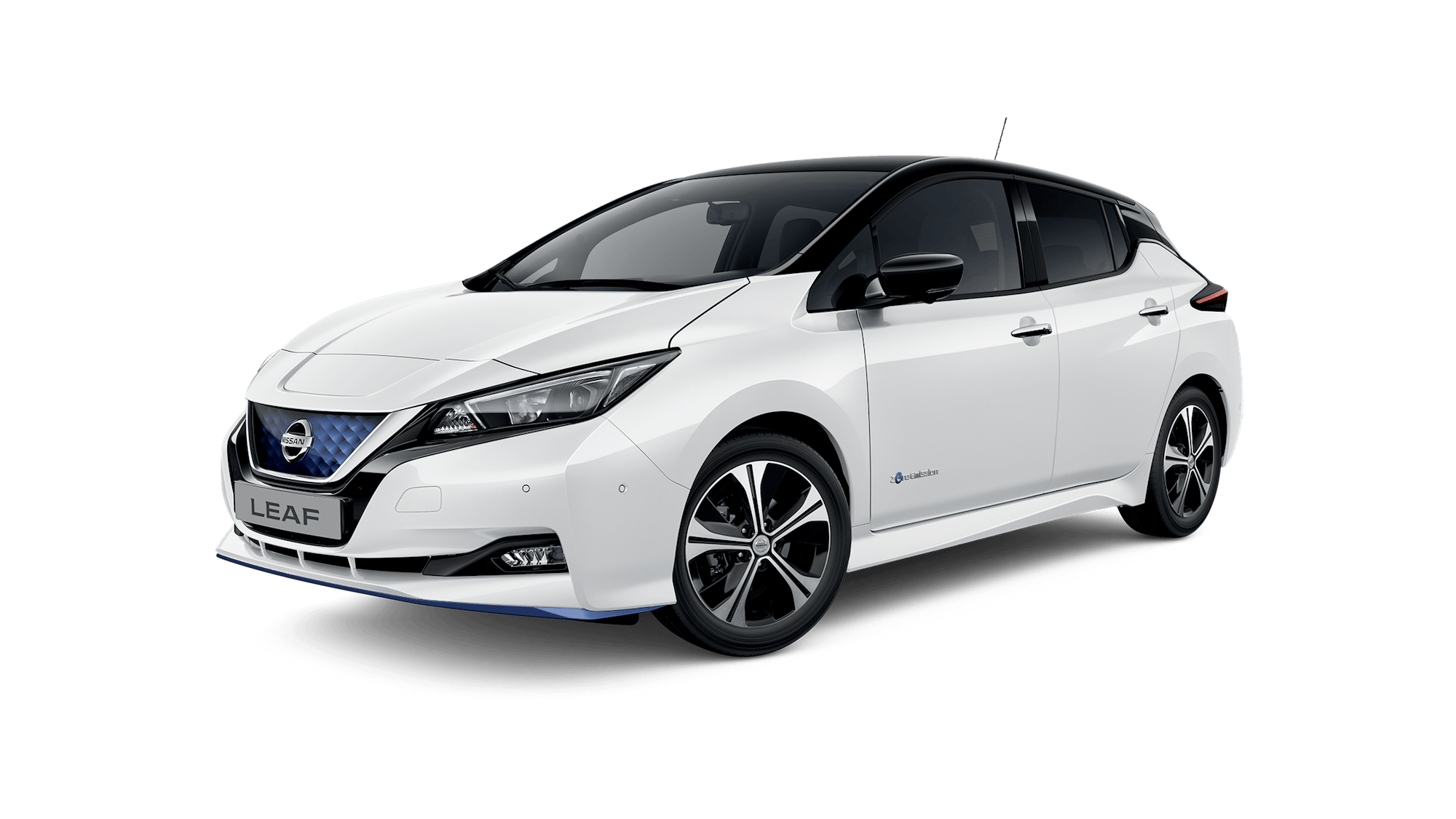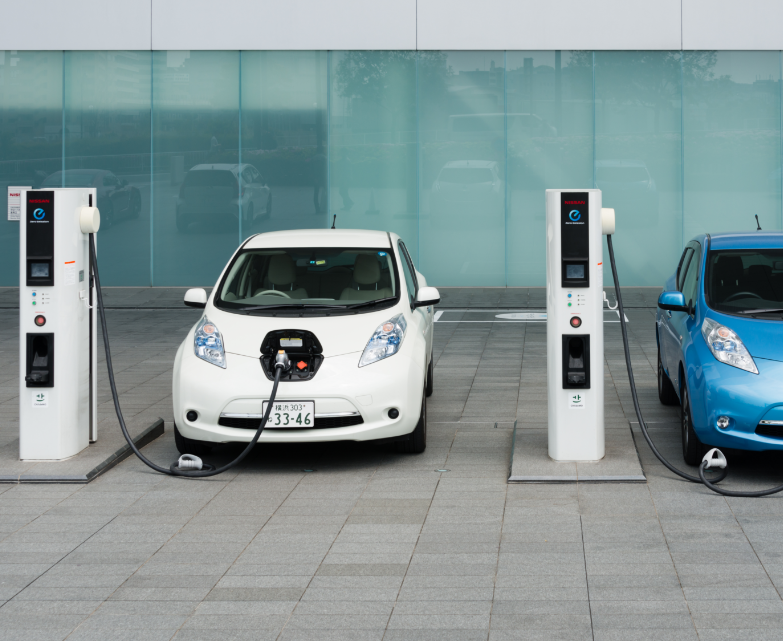Why going electric
makes sense for
businesses and fleets

Why switch?
The timing is ideal for your fleet to start making the transition.
Electrifying your corporate fleet is a simple action that delivers multiple benefits – reducing costs, improving air quality and citizen health and protecting the environment.
Mass market EVs have come a long way since the first models were introduced around 2010. Purchase costs are lower, the range is longer, different vehicle types are becoming more widespread. Charging is now quicker, smarter, and more readily available.
EVs include the following vehicle types:
Plug-in Hybrid Electric Vehicles (PHEVs) combine an ICE with a battery electric drivetrain. The car can be re-charged by plugging into an external battery charger, or through the internal energy exchange within the vehicle. Batteries are typically sized for medium distances and, when combined with the ICE, can deliver up to 870km of driving range.
Battery Electric Vehicles (BEVs) have a full electric drivetrain. The car is powered by electricity from a battery and charged via an external charger. Longer driving ranges require bigger battery packages. Depending on the battery size, charger type and charging power, a full charge can be completed in anywhere from five minutes to several hours. EV range has increased steadily since 2010 with some offerings now delivering up to 600km.
Fuel Cell Electric Vehicles (FCEVs) generate electricity for their electric drive train on-board, by using a fuel cell fed with hydrogen. The hydrogen tank can be refilled in just a few minutes, which makes it useful for intensive operations. However, there is little hydrogen filling infrastructure available. FCEVs deliver ranges up to 600km.
Why going electric
makes sense for
businesses and fleets
Why it makes financial sense
Many governments are keen for EVs to succeed and so they provide subsidies for EV purchases. In addition, studies increasingly show the cost advantages for the total cost of ownership (TCO) of some EVs compared to other vehicle powertrain types such as internal combustion engines (ICE).
Relative to the ICE, BEVs and PHEVs have very low costs for energy because electric motors are typically three to five times as energy efficient as the ICE. Maintenance costs are also very low because electric motors have very few moving parts and require no oil changes. Brake-wear is also reduced due to the regenerative braking systems common on all electrified powertrain systems.
A major benefit is that EVs produce no emissions from the tailpipe. This attribute is increasingly impacting the bottom line as business and governments aim to reduce greenhouse gas emissions (GHGs) as well as other toxic pollutants like nitrous oxides and particulate matter.
Companies can save money by going electric, which can also help avoid city fees and taxes relating to high-polluting vehicles or outright limits to city street access.

Why it’s better for the planet
Why should you choose electric cars for your fleet when there are lots of other alternative fuels becoming available, such as natural gas, propane gas and advanced biofuels?
EVs show a better reduction in emissions over their complete lifecycle (compared to ICE), even when accounting for their production, use and recycling.
In summary, electrification (and the use of BEVs) is increasingly seen as the best route to reduce emissions from the road transport sector (depending on use case).
This is an important consideration for companies. EVs can help to reduce overall energy consumption, minimize the impact on the environment and also meet the regulations that are expected to come into effect in the near future, such as those relating to climate/carbon emissions and reporting, from the Task Force on Climate-related Financial Disclosures (TCFD).
Moreover, electrification will be fundamental when companies develop the integrated energy strategy that also utilizes the knowledge, expertise and relationships with their suppliers and customers.
Several studies have demonstrated the improved life-cycle emissions for electric vehicles, including the 2019 Global EV Outlook developed by a consortium of agencies lead by the International Energy Agency (IEA).
The life-cycle emissions for EVs are heavily influenced by several factors, one of which is the renewable energy mix of a country.
The figure below illustrates the clear benefit of adopting EVs and their significant impact on avoiding GHG. Reducing CO2 emissions can directly help to limit temperature increase up to 1,5ºC.

GHG emissions avoided by EVs compared to equivalent ICE fleet by region,
2018 (Global EV Outlook, 2019)

China

North America

Europe

Rest of the World
Notes:
GHG emissions from an equivalent ICE fleet indicate the WTW CO2-eq emissions that would have been emitted if the EVs had been ICE vehicles of equivalent size. The carbon intensity of the national power systems account for transmission and distribution losses. Sources: IEA analysis based on country submissions; carbon intensity of the national/regional power systems from (IEA, 2018c); accounting for transmission and distribution losses from (IEA, 2018c).
How can EVs improve your company’s vehicle fleet management?
Additional benefits of EVs include:
Significantly lower repair and maintenance bills compared to ICE vehicles
Driver satisfaction – the instant acceleration, ease of one-pedal driving and reduced noise are just some of the things drivers regularly report they love about EVs
Policy incentives – for example the VAT, import and road tax exemptions for EVs in Norway
Better access – examples include the exemption from congestion charging zone fees in London, access and free parking in Lisbon’s and Madrid’s restricted access area and access to city centers with impending ICE bans

Examples of company fleets and EV use cases
There are many types of EV use cases and vehicle fleets. This guide applies to corporate fleets that primarily use light duty vehicles (LDVs).
The guide focuses on three primary EV use cases. These have been selected based on a company’s ability to influence early EV adoption. Where necessary, this guide provides additional detail on each use case. Before diving into the “how-to” you can see a typical user story by selecting each use case below.
Start transitioning your fleet to electric!


